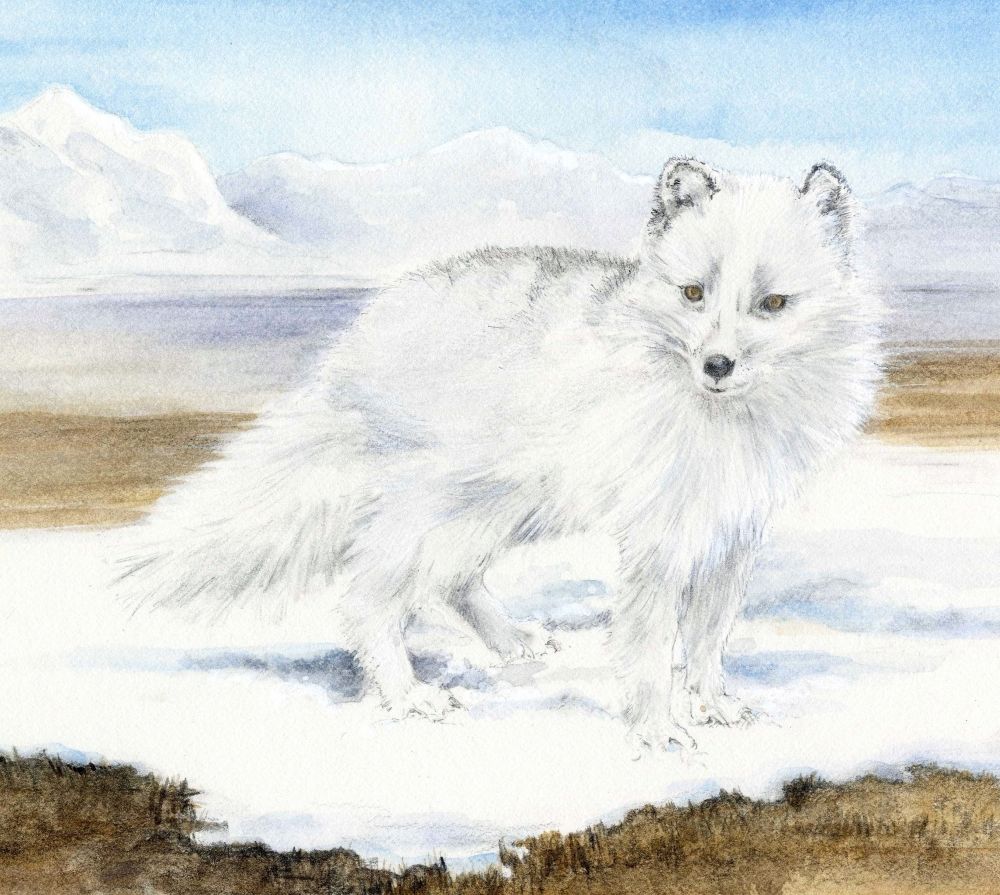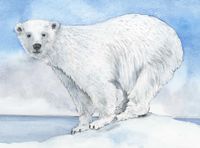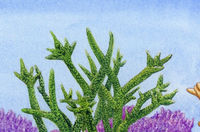
Arctic Fox
Latin name: Vulpes Lagopus ,Conservsation status: least concern (population is stable)
With fur on the bottom of their feet (vulpes lagopus means "hair-footed fox"), reserves of fat, the ability to slow their metabolism when food is scarce, and a thick coat that changes from white to brown or gray with the season, Arctic Foxes are especially adapted to the tundra.
The Arctic tundra is a region of shrubs, grasses and permanently frozen subsoil. Warming could change the tundra to boreal forest—habitat for the Red Fox. The Red Fox, a predator and a competitor for food, is already beginning to migrate north into the Arctic Fox's territory. Milder tundra weather also causes changes in the population of lemmings and rodents—main food for the Arctic Fox.
Other animals effected by climate change
 Polar Bear
Polar BearPolar Bears live only in the Arctic. Loss of sea ice has a critically adverse effect on Polar Bears. They hunt from the edge and build snow dens on the ice for resting and raising their cubs. Sea ice decline could open the Arctic to shipping and tourism, further disturbing Arctic habitats. Other threats are oil development and industrial pollution that reaches the Arctic through air and ocean currents.
 Beluga
BelugaBelugas live in Arctic and Sub-Arctic waters. Impacts from climate change include: an increase in ship traffic as sea ice declines, oil exploration and extraction, fisheries by-catch, and disruption of the food web. As Arctic waters warm and currents change, the Humpback (a competitor) and the Orca (a predator) may move north and stay longer. Some Beluga populations are also threatened by hunting, pollution and habitat loss.
 Sockeye Salmon
Sockeye SalmonFor decades wild salmon populations have been in decline from human causes: over fishing; habitat degradation—logging, mining, agriculture and dams; pollution; and interaction with hatchery or farmed salmon. These conditions and threats may hinder their ability to adapt to the effects of climate change. Salmon thrive at specific freshwater temperatures—warming air raises water temperature. Early snow melt and increased rains cause physical changes to spawning streams.
 Staghorn Coral
Staghorn CoralIn the last 30 years the Staghorn Coral population has decreased by 80% from disease, pollution, development and damage. Climate change is increasing the risk of extinction. Corals live in symbiotic (mutually beneficial) relation with algae. The coral receives nutrients and oxygen from algae, and the algae receive nutrients and carbon dioxide from the coral. Rising sea temperature increases algae growth so oxygen levels become too high for the coral, causing "bleaching"—the coral expels the algae and dies. Higher ocean acidity contributes to bleaching and also reduces the ability of corals and other marine animals to build hard shells. Other threats from climate change are sea level rise, changes in currents and storm damage.
